Analyzing the role of nickel surfaces as airborne pathogen inhibitors
Abstract
Each day, interactions among humans result in the transmission of bacteria, some strains of which are the source for contagion. Numerous infectious diseases, such as tuberculosis, pneumonia, and mycoplasma, are transferred through airborne mechanisms, and pose serious health and economic risks. In low-income countries, for example, lower respiratory infections are the leading cause of death. The Center for Disease Control also reports more than 2.8 million antibiotic-resistant infections in the United States. annually as well as 1.7 million healthcare associated infections (HAI’s). HAI’s alone result in an economic burden of $28 to $45 billion just in the United States. Two years ago, motivated by the copper industry promoting the antimicrobial and antiviral benefits of copper for use in touch surfaces, this author tested the effectiveness of different metals at resisting E. coli growth and discovered that nickel-plated brass significantly outperformed the other materials tested. This author’s research last year further suggested that antimicrobial properties of nickel do not diminish at reduced nickel-plating thicknesses. This current research sought to understand if the antimicrobial properties of nickel could be extended to reduce bacteria in ambient air. An air filtration device was built by first nickel electroplating 118 copper tubes with a length of 30mm ad an outer diameter of 6mm. The nickel-plated tubes were then arranged in a honeycomb configuration in an enclosed chamber where ambient air was passed trough the nickel filter to agar plates. After 24 hours of incubation, results showed that filtering ambient air through nickel-plated copper reduced bacterial growth by 43%. This research suggests that if nickel-plated copper filters were incorporated into heating, ventilation, and air conditioning systems of public spaces, there could be both a significant reduction in sickness and death, as well as a global economic benefit in the order of several billions of dollars annually through the reduction of ambient air as a source of contagion.
Independent Variable
Material tested: nickel-plated air filtering device, copper air filtering device, and no air filtering device
Dependent Variable
Percentage of agar plate that is bacteria free after 1 hour of air exposure to air filter under fume hood and 24 hours of incubation
Controlled Variables
Testing chamber used for bacteria testing, velocity of air flow through the testing chamber, agar plate type and sensitivity, testing duration, surface area of the filter, temperature of the nickel-electroplating solution, duration and current (amperage) of the electroplating process
Photo Gallery



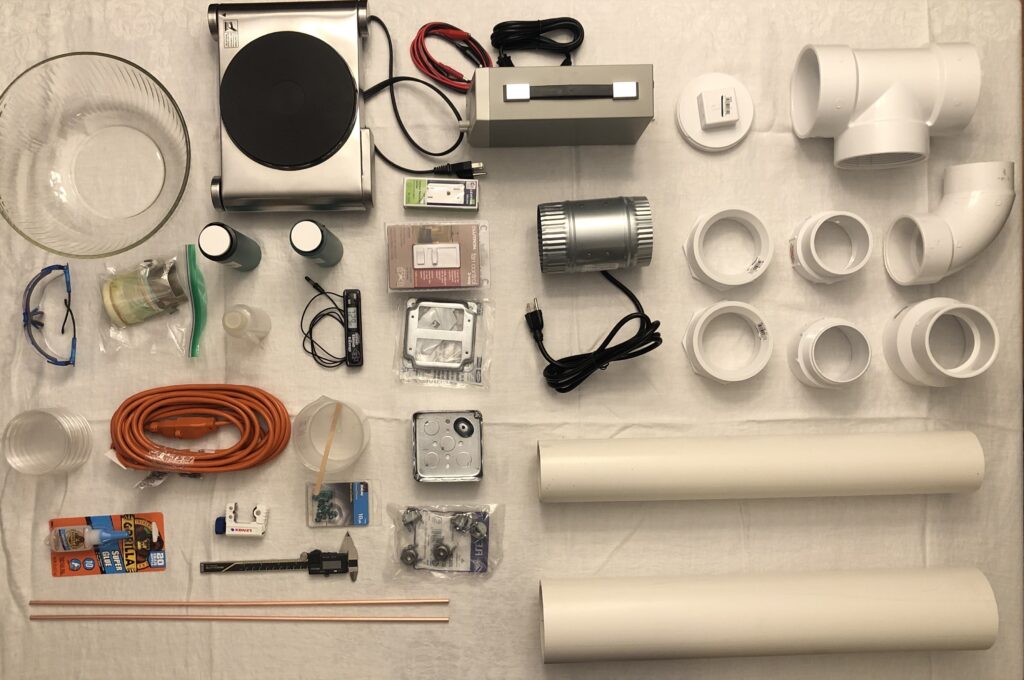

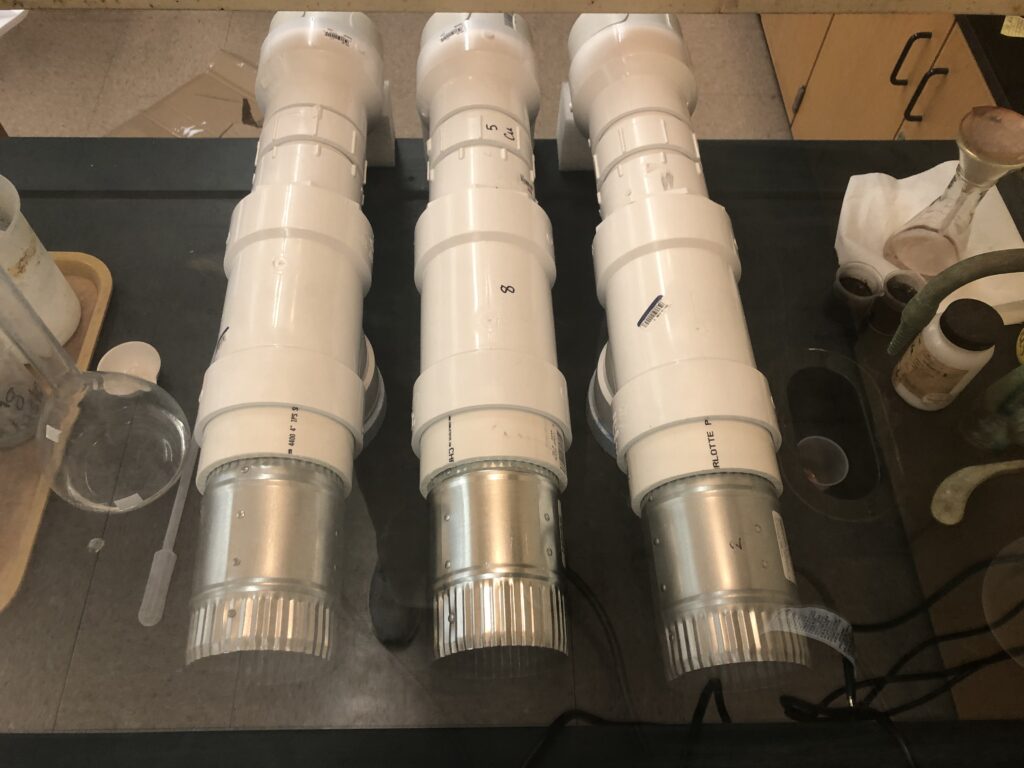
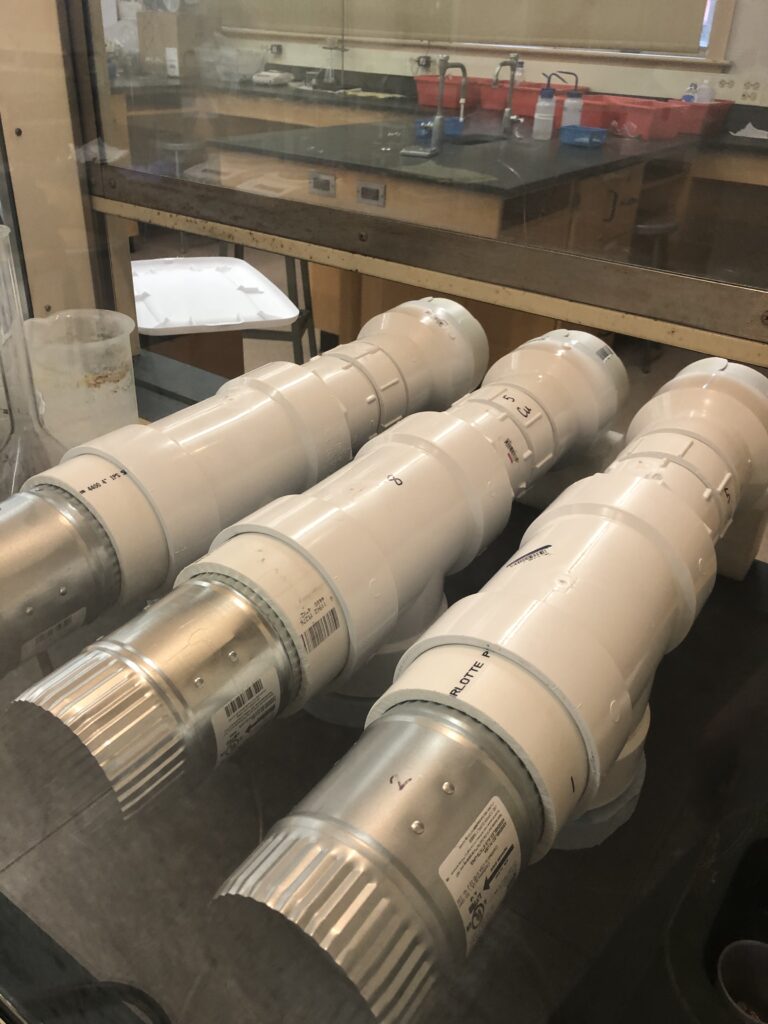
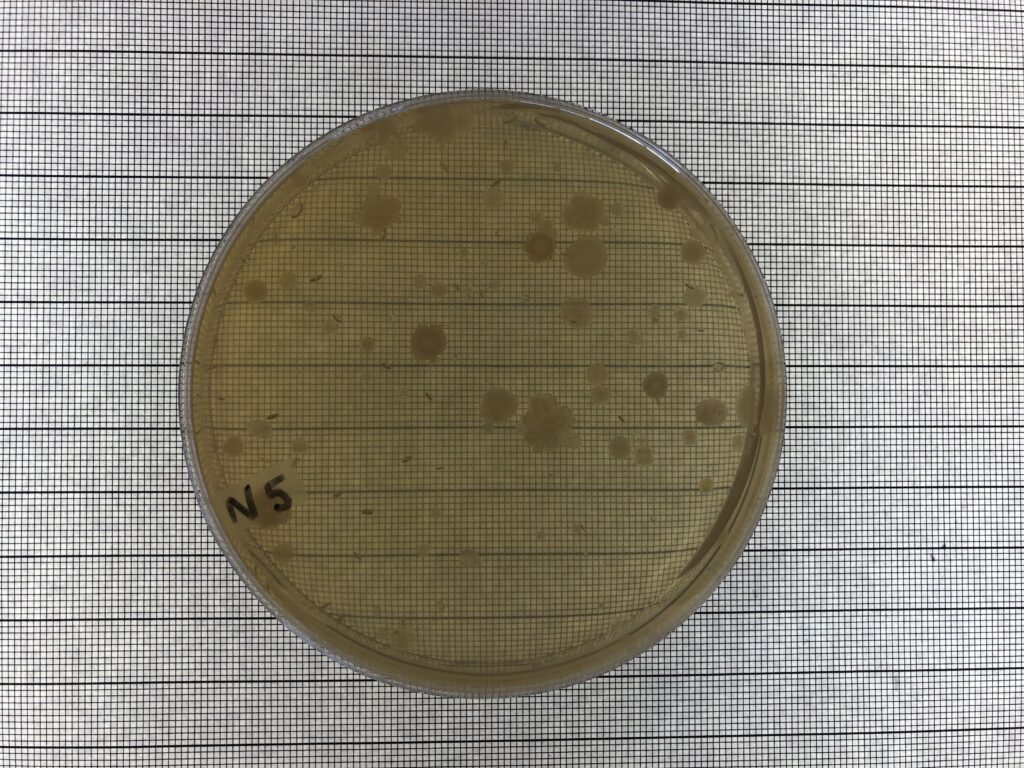
Data Collection
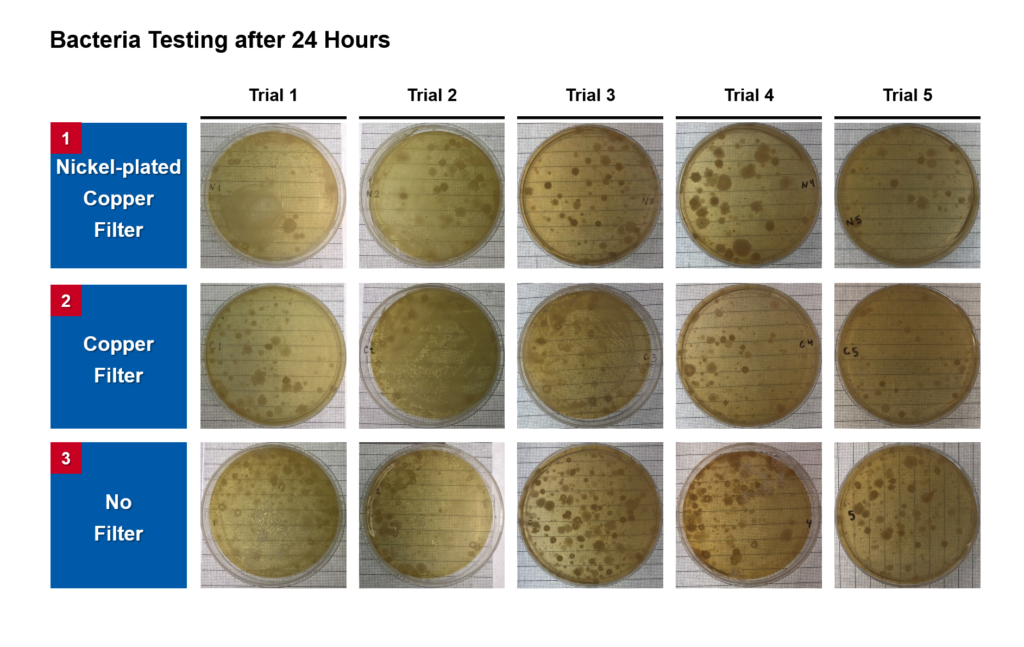
Results
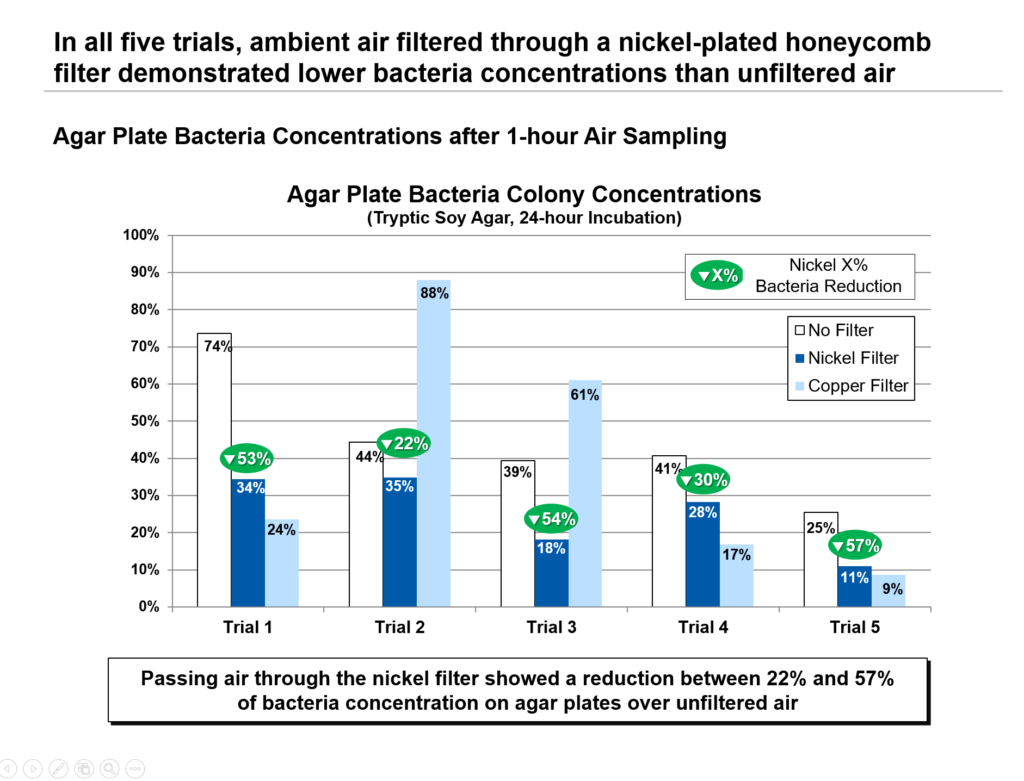
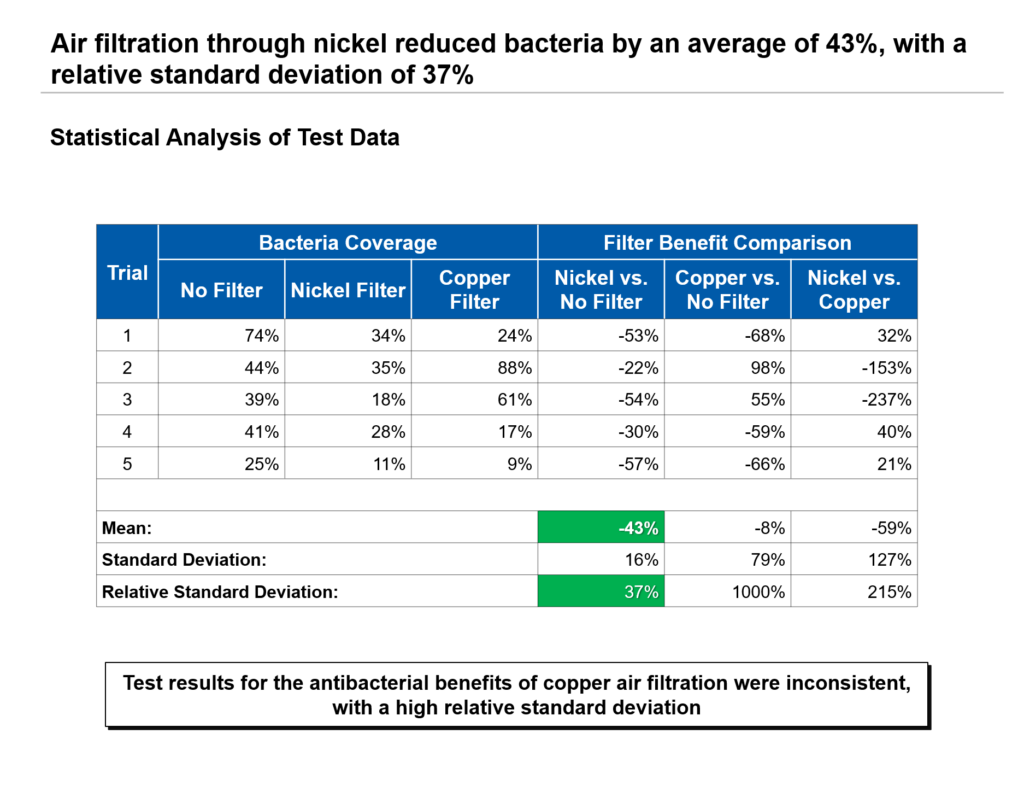
Conclusion: Key Takeaways
• Hypothesis supported: The antimicrobial surface properties of nickel were shown to reduce bacterial concentration in the air by an average of 43%.
• Copper demonstrated inconsistent results, not always reducing bacteria concentration.
• Nickel did not entirely eliminate bacteria in this experiment, as it did with touch surfaces.
• In three of the trials, copper out-performed nickel in bacteria reduction, but in two trials copper substantially under-performed.
The Case for a Material that Fights Microbes
Annual cost of the Flu and Common Cold in the U.S.
>31 million doctor visits
>$10B in medical expenses
>200,000 hospitalizations
>$24B in lost wages
Between 3,000 & 49,000 deaths
>$100B in “total economic burden”
History Forgotten
• Egyptians used copper over 6000 years ago to sterilize wounds
• Due to purchasing cost considerations over the past 50 years, steel and plastics have largely replaced copper alloys for door knobs, handles, railings, buttons, and levers in public spaces
